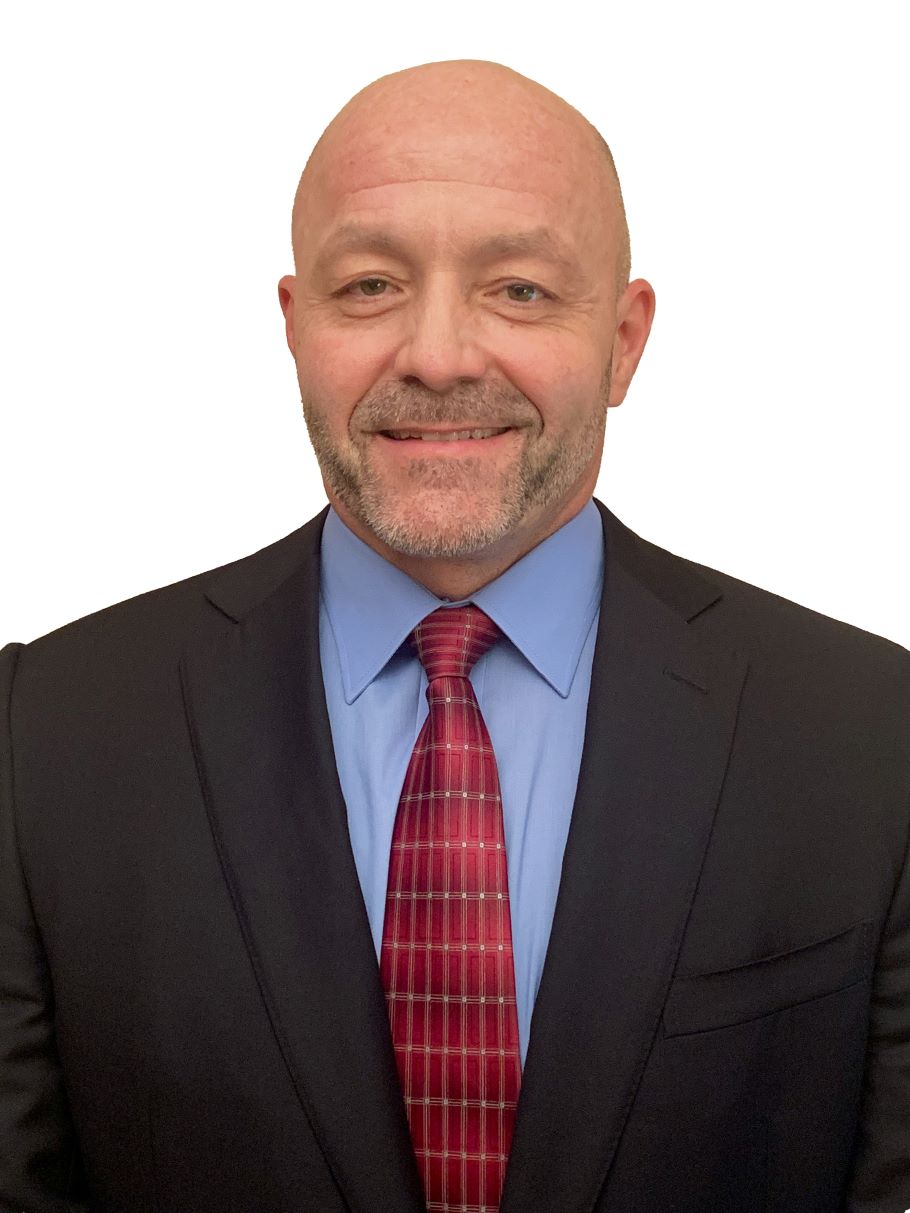Presented by:

Editor's note: This article appears in the new E&P newsletter. Subscribe to the E&P newsletter here.
As the oil and gas industry makes strides to recover from the 2020 market, operating companies continue working to clean up the atmosphere. Many companies have set the deadline of 2050 to reach net-zero CO2 emissions—a year that is not as far away as it may seem. In just under 30 years, U.S. and international operators will be held responsible for a reduction of greenhouse gases in the earth’s atmosphere. Carbon capture and storage (CCS) provides an accessible way for operators to reduce their carbon footprint and has been widely implemented to carve a dent into companies’ emissions.
Achieving these goals, however, requires progress in the kinds of technology in use in the fields. To fulfill that demand, service providers have been working to develop tools and systems to aid the process of capturing and storing carbon emissions.
To provide further insights into the technology behind CCS, Hart Energy spoke with leaders from three major service providers, who shared their thoughts on CCS technologies in the field today and their projections for the future.
Roundtable Speakers:
Assaad Mohanna, senior director of low carbon solutions, NOV
Scott Eberhardt, business development manager for carbon, Schlumberger
Ming Ongkwan, director, strategic business, Halliburton
Shelagh Baines, co-director and carbon sequestration specialist, Halliburton
HART ENERGY: What do CCS technologies look like in the field today?

MOHANNA: What we see is that existing field applications of carbon capture technology date back several years, if not decades. The development of new carbon capture technologies is still in its early stages of maturity and is dominated by low to medium technology readiness levels. When it comes to storage, enhanced oil recovery has been the primary use of captured carbon, and dedicated storage is also relatively less practically proven than academically studied. Globally, there are close to 30 carbon capture facilities in operation, capturing 35 mtpa. Another 50-plus facilities are being planned for the next three to four years to increase global capture capacity to nearly 110 mtpa. Almost all CCS applications are supported by government funds, which are necessary to get the technology over the feasibility curve. The economics still struggle when not used for EOR, particularly because carbon capture is capex-intensive and energy taxing on its host point source.
Future facilities will test newer carbon capture technologies and look for ways to make the cost of capture and storage optimized.
EBERHARDT: CCS will play a significant role for at least the next several decades. Schlumberger projects, which have been located both on- and offshore, have focused on injection into saline aquifers and utilized depleted oil and gas reservoirs. We have worked with companies that are involved in the oil and gas industry, as well as those that are not in oil and gas, such as the utility and power companies, steel and cement companies, as well as biomass industries.
HART ENERGY: How have you seen CCS technologies and practices evolve over the past decade as a heavier emphasis has been put on ESG?
MOHANNA:The emphasis on ESG helped, but the shift in policy and making incentives/taxes available made things move even faster.
We have certainly seen a rapid acceleration of deployment as a result, making carbon capture grow beyond the point source, to direct air capture, bioenergy with carbon capture and storage (BECCS), in blue hydrogen applications and syngas generation. This is a great place for startups, scientists and inventors, as they can help with the fast tracking of this journey.
The shifting policy landscape has helped, but it is not enough. Technology improvements, focus on supply chain collaboration and risk reduction in execution models are also detrimental to making CCUS economical.

BAINES: In terms of evolution, the technology already exists as much of it comes from the oil and gas industry. But the difference we are seeing is the approach. When we first started out, it was very much a single source of CO2 being matched to a single storage site. And now I think in order to benefit from the economies of scale and then the financial savings that that can cause, that can create, is moving to much more of a hub and cluster where you have a number of different sources of CO2 being close together and the CO2 being transported to a storage site, which can handle the full volume of the CO2. Of course, the volumes of CO2 being captured and needing storage are also increasing.
In terms of specific technology, we are better able to simulate the storage sites with a faster turnaround and more detailed models.
HART ENERGY: What kind of solutions have you seen operators leaning toward in terms of CCS?
MOHANNA: Amine-based post combustion capture technology has been the common capture method. Depending on where you go, however, other technologies with lower readiness levels are being developed.
Generally speaking, operators are all well aware of the challenged economics for CCS. Costs are still significantly high and higher than what subsidies and tax credits can offer in their current form, with the exception of a few geographies. One way to make economics work today is through clusters—the traditional format of having one source, one pipeline and one storage site has been challenged by networks that share transport and storage.
In Europe the majority of CCS projects are part of industrial clusters. Humbler and Teeside in the U.K., Northern lights in Norway and Porthos (Port of Rotterdam) in the Netherlands are a few examples of CCS hub projects in Europe.

EBERHARDT: The biggest thing we are seeing today is more collaborative client engagements. We collaborate with our clients to provide a safer, efficient, economic CCS project, which is of course just one of the ways that we are helping them achieve their net zero targets. As the CCS industry matures, we anticipate more opportunities among industry players to exchange best practices, lessons learned and utilization of the latest in technological innovation. Ultimately, this will help drive new and innovative CCS solutions for the oil and gas industry.
BAINES: It depends on the type of project. We are seeing a number of single-source projects—for example, a hydrocarbon field that is under development. If you go to some of the Asia-Pacific nations, a lot of their gas fields contain a lot of CO2 naturally. Now obviously, in order to burn that natural gas as a fuel, you have to extract most of that CO2. Otherwise it doesn’t burn. This is what we call sales gas. Where the gas comes in from the field, it goes through a gas processing plant, and that's where the CO2 is concentrated, and then the sales gas leaves without that CO2. They then have to deal with this stream of CO2.
They may look for some enhanced hydrocarbon recovery with that the CO2, just trying to boost how much more oil and gas they can get out of the field. But they're also looking to perhaps also oversize that storage so they can take gas from other high CO2 fields, or to just store the CO2 in a field that has already been produced. They're trying to build more of a cluster-type approach to their storage.
HART ENERGY: How has your company been helping operators achieve their carbon emissions goals with CCS technology?
MOHANNA: With more than 400 projects worldwide in gas processing, we can engineer, design and fully execute built-for-purpose carbon capture systems for many industry applications. In fact, we already have a post-combustion facility design that combines the proven amine-based technology with NOV’s process expertise. By offering this solution as an economical and highly reliable system, we take away the risk of execution and technology uncertainties. For other methods of carbon capture, we have established partnerships, and are still forming partnerships, to support an arsenal of increasing flexibility and adaptability with every emitting facility out there, while still maintaining the excellence in execution and performance.
EBERHARDT: One example is we are working to minimize human footprint for conducting the monitoring requirements on CCS projects. Basically, we do this with remote monitoring services, utilizing digital technology, so that no one has to travel to the wells to gather data. Schlumberger is in a unique position because of our history in the oil and gas industry, which enables us to compare the requirements for a successful oil and gas project to that of a successful CCS project. We can look over both project workflows and life cycles to determine by each of the phases whether any gaps exist and focus our efforts and investments on bridging those gaps.

ONGKWAN: Halliburton [does this] in two areas: with the depleted oil and gas wells by assessing old, existing wells and trying to renovate these wells to reuse this infrastructure, and in saline aquifers—what we call a greenfield site—where there are no wells, we plan a design and drill new wells for CO2 injection.
We are also subsurface experts, providing the subsurface information needed for a safe project—for example, making sure there is enough capacity or space for the CO2 and making sure it is injected in the right place for maximum efficiency.
Lastly, we are experts in the area of monitoring the CO2 during and after it has been injected, giving real-time data. This is important to comply with regulatory requirements. And this comes with software, it comes with knowledge, it comes with our competency around understanding profiling from logging to all the different, drilling, technologies and all that.
HART ENERGY: What kind of planning goes into implementing your company’s CCS technologies in the field?
MOHANNA: Just like in other projects, we have been working with our clients on feasibility studies to explore what solution and technology best fits their project needs.
Capex costs optimization is important, but as opex costs are the main driver for the total CCS costs, our team has high focus on this. One challenge for any facility is that the carbon capture process takes away from bottomline output of a facility due to its high energy consumption. The key here is how effective can we be in using waste energy from the system, as well as existing emitting plant infrastructure, to power the CC process. And we do that in our studies.
In addition, NOV’s U.S. and U.K. research and development facilities are a critical part of our low-carbon solutions strategy. Our test facilities are collaboration spaces to accelerate the advancement of technology before it goes to the field.

EBERHARDT: We have a workflow that starts out with a pre-selection process, which involves us collaborating with our clients to conduct a high-level assessment of whether or not the project will be feasible. These are very high level, more or less to determine the viability of the project before any further investment is done by our clients. The next step is the appraisal phase, which is where we start to really get into the site specifics by building geological models, leveraging our subsurface data and domain expertise. Following the appraisal phase, is the development stage, where we manage building out of the project. This includes determining the drilling well location and how many remaining injection and monitoring wells are required, setting up the air and ground monitoring services, and completing any other permit specific requirements to get to the ultimate goal of getting the permission to inject. Next comes the injection phase followed by the last phase, the post-injection phase, which can last up to 100 years, depending on where the project is located.
HART ENERGY: Do you see CCS being more cost-efficient in the future? How do new CCS innovations affect your company’s spending and budget?
MOHANNA: CCS is the most practical way to reduce emissions from hard-to-abate sectors like cement, chemicals, iron and steel. It also reduces emissions from existing energy assets without the need to build new assets. When you add knowledge transfer from other applications with technology improvements and scale, you achieve cost reductions.
CCS has to become self-sustaining to make it as a permanent tenant of the value chain. Just like renewables, which have gained efficiencies primarily through government funding and scale, carbon capture will become economical with more implementation and technology. It will really be up to us. We need to have the tools and skills to make CCS accessible not just to those who can afford to subsidize but also to the entire world, just like we have made energy from oil and gas also accessible to the world.
EBERHARDT: As CCS matures, yes, we'll see economies of scale and efficiencies in both the capture technologies, transportation as well as storage—so I believe as this progresses, with efficiencies and the latest technologies, we will have better planning, which will obviously make more projects financially viable. Applying the technology we have learned from the oil and gas industry, and adjusting these to the CCS requirements, will make that timeline shorter.
ONGKWAN: As more and more projects are developed, the costs of CCS should decrease. We are already seeing this in the costs of the capture of the CO2, which have come down greatly. There are other commercial drivers and incentives that are really helping the growth of CCS as a new industry. One example is the 45Q tax credit in the U.S. Already we are seeing a lot more interest in project development, particularly where it is for opportunities where a fuel product is going to be sold in California where the Low Carbon Fuel Standard also provide a financial incentive. This all offers additional opportunities to a company like Halliburton to build on their existing capability and experience and help drive the move to a lower carbon economy.
HART ENERGY: When do you foresee companies in the industry achieving net-zero emissions?
MOHANNA: When private investment starts finding its way faster to low-carbon solutions, we will see those net-zero emission goals becoming more realistic and achievable. The world needs to capture 1,500 mtpa by 2030. This goal keeps us on track for limiting global warming to a 1.5 C increase as per the Paris Agreement. At an average of 2 mtpa per plant, we need over 700 CCS facilities in the next decade. These need to be in feasibility in the next five years to be ready in time. That target will be hard to hit if costs don’t drop and policy doesn’t shape up. Technology advancements, a more robust ecosystem and clarity from government policy will be essential for attracting private investments.
EBERHARDT: At Schlumberger, we have goal to be carbon net zero by 2050, with strategies and plans in place to decarbonize our operations, and then provide technologies and services to our customers to help them achieve their emissions reduction goals.
HART ENERGY: With so many companies pledging to reduce their carbon footprint, what do you see the future of the energy industry looking like?
MOHANNA: The future of energy is about diversity of sources and collaboration of industries. At NOV we are repurposing our capabilities in oil and gas to develop and make economical a wide range of other energy sources. Just like our gas-processing capabilities translate into excellence in execution in carbon capture plants, our jackup rig systems translate almost perfectly into offshore wind tower installation vessels, which we have been doing for many, many years. Our semisubmersible designs make award-winning floating wind tower foundation designs. Geothermal is a natural space for us. Bioenergy is a space we have been in for many years as well. And many other areas are becoming natural habitat for us to expand our core capabilities into. NOV and the oil and gas industry are proving to be a critical part of the energy transition, and I think that by extending our expertise into these newer areas, we can make the transition safer, more reliable and sustainable.
EBERHARDT: To achieve the carbon net zero goal by 2050 and help drive the energy transition, we need to target new technologies and low carbon platforms as well as continuing to focus on decarbonizing oil and gas operations. However, it’s a complex challenge and there really is no easy answer. Certainly, as part of the solution, we will need to continue our focus in oil and gas. Oil and gas is not going to go away, and for both this and other parts of the energy industry, we need to use our research development and our technologies to decarbonize every aspect we can of the industry or we're not going to reach those goals.
BAINES: At the moment, the drivers for change in the energy ecosystem are directed at the federal level with tax incentives and the cap-and-trade payment system. In the future, as the project economics become more developed, or more positive, more capital will be available from the private sector and the CCS industry should grow.
In addition, we see the potential for different types or sources of energy contributing to the system, for instance hydrogen, renewables including geothermal, wind and solar, plus others such as biomass. Of course, CCS helps enable the development and growth of some of these, such as blue hydrogen and BECCS, as we still have to deal with the CO2 produced.
Recommended Reading
CEO: Coterra ‘Deeply Curious’ on M&A Amid E&P Consolidation Wave
2024-02-26 - Coterra Energy has yet to get in on the large-scale M&A wave sweeping across the Lower 48—but CEO Tom Jorden said Coterra is keeping an eye on acquisition opportunities.
Matador Resources Announces Quarterly Cash Dividend
2024-04-18 - Matador Resources’ dividend is payable on June 7 to shareholders of record by May 17.
Matador Resources Declares Quarterly Dividend
2024-02-14 - Matador Resources will pay a $0.20 dividend on March 13 to shareholders of record by Feb. 23.
Kimmeridge Fast Forwards on SilverBow with Takeover Bid
2024-03-13 - Investment firm Kimmeridge Energy Management, which first asked for additional SilverBow Resources board seats, has followed up with a buyout offer. A deal would make a nearly 1 Bcfe/d Eagle Ford pureplay.
SilverBow Rejects Kimmeridge’s Latest Offer, ‘Sets the Record Straight’
2024-03-28 - In a letter to SilverBow shareholders, the E&P said Kimmeridge’s offer “substantially undervalues SilverBow” and that Kimmeridge’s own South Texas gas asset values are “overstated.”





